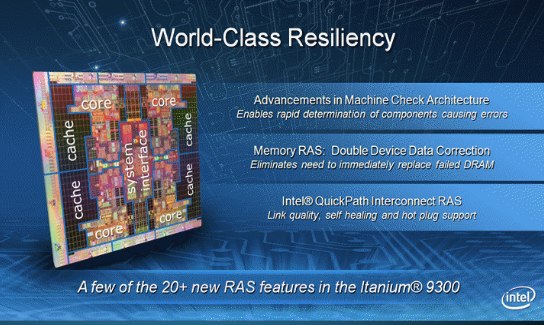Intel unveils Itanium 9300, highlights next-gen computing for enterprise

Intel today highlighted another Moore's Law update in computing power, unveiling the Intanium 9300 processor - which had been codenamed "Tukwila" - touting its increased performance, scalability and reliability for enterprise-level computing.
The announcement, which was delivered with partner HP standing on stage with Intel, comes as the server wars heat up today. This morning, IBM kicked things off with a rollout of its latest Power 7 systems, which are designed to power everything from smart grids to analytics. In a Webcast presentation today, Intel touted the performance bullet points:
- Twice as many cores as its predecessor - four versus two
- Eight threads per processor (through enhanced Intel Hyper-Threading Technology)
- More cache
- Up to 800 percent the interconnect bandwidth
- Up to 500 percent the memory bandwidth
- Up to 700 percent the memory capacity using-industry standard DDR3 components

The company, in it announcement, also highlighted "common platform ingredients" to spur innovation and add value. In its news release, the company wrote:
The Itanium® 9300 processor series and the future Intel Xeon processor, codenamed "Nehalem EX," share several platform ingredients, including the Intel QuickPath Interconnect, the Intel Scalable Memory Interconnect, the Intel 7500 Scalable Memory Buffer (to take advantage of industry standard DDR3 memory), and I/O hub (Intel 7500 chipset). The common elements foster shared innovation, design synergy, and manufacturing efficiency across Intel Xeon® and Itanium processor families, and flexibility for customers.
Finally, the company also addressed what it called intelligent energy efficiency using an enhanced form of Demand-Based Switching to lower power consumption when utilization is low. The Turbo Boost technology kicks into gear to deliver a performance boost when it's needed but then scales down to conserve power when it's not.